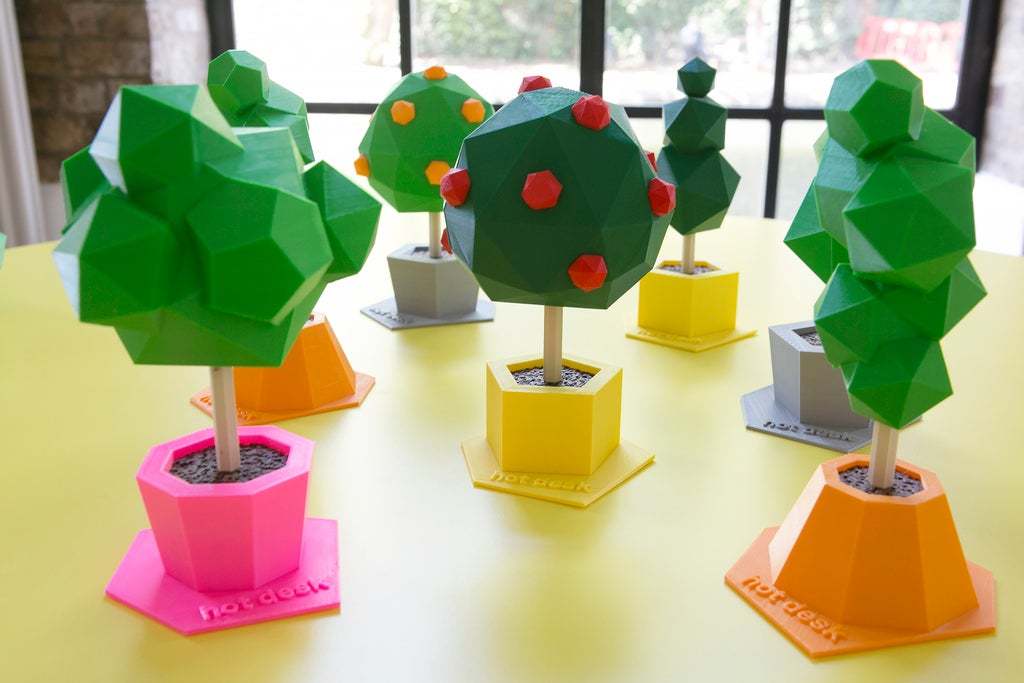3D modeling is the art of creating digital representations of objects or surfaces using 3D modeling software. In the most basic case, three-dimensional models can be created from simple shapes like cubes, rectangles, and triangles. These shapes are then modified into complex, high-polygon designs.
As a beginner in 3D modeling, there’s a lot you need to know. In this article, we’ll go over the basics and different types of 3D modeling, as well as usage and suggestions for software. We’ll also share some tips and troubleshooting to keep you going. At any point, feel free to refer to the glossary at the end.
Let’s kick-off!
Uses

3D modeling is the intermediary step between having an idea and making it real. It can be used to create an interactive design of an object or surface that represents a real-life design.
Depending on the application, it can also be an important step for testing the structural feasibility of a design. For example, a part of a physical object can be created quickly, its physical properties analyzed, and then the model updated as needed.
Whether offline or in-browser, 3D modeling (sometimes called computer-aided design) software allows designers and companies to model products and present them, internally or to clients, before a final product is created. Not surprisingly, 3D modeling can be both time- and cost-efficient.
Now that we know some of the general uses, let’s get into the basics of 3D modeling!
The Basics
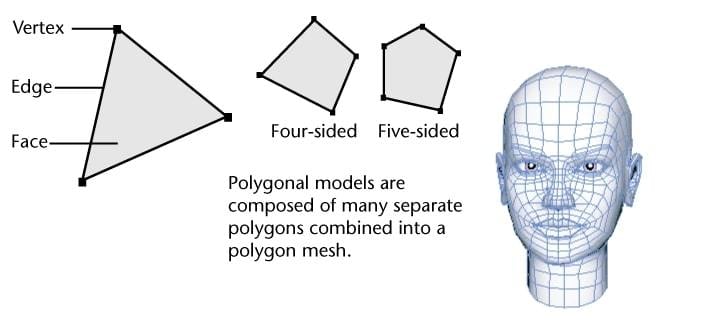
At a fundamental level, you’ll need to know the building blocks of 3D modeling. Here are the most important terms:
- Vertex: A single point and the smallest component of a 3D model.
- Edge: A straight line that connect two vertices. Edges define the shape of a 3D model.
- Polygon: Any shape that’s formed by connecting straight lines. There are several types of polygons (equilateral, equiangular, regular, irregular, cyclic, convex, concave) depending on the number of sides and the extent of the angles.
- Face: The most basic part of a polygon mesh. It is the space between the edges.
- Mesh: A collection of polygons that are connected along their edges. A 3D object consists of one or more 3D meshes.
Now that we have some basic terms down, let’s move into 3D environments. Every 3D modeling program uses a 3D environment, which is made navigable using vectors and planes.
- Vector: Indicates directionality and orientation, usually along the 3 axes.
- Plane: Two-dimensional surface oriented along one of the 3 axes.
Low & High Poly
Another concept you can’t miss in 3D modeling is low-poly models. These are polygonal meshes that have a small number of polygons (see the image above). The low-poly modeling technique is usually used in subdivision modeling, animation, and rigging.
Low-poly models are great if you’re designing a model that you intend to use in a real-time engine, such as Unity. Their main advantages are the ease of loading, viewing, and editing. With a simplified model, there won’t be a lot of detail, but you can work on them quickly.
High-poly models, as the name suggests, are models that have a high polygon count, providing more detail. Due to the density of such a model, editing and moving around the viewpoint takes time and can be much harder. It’s should be no surprise, then, that rendering high-poly models takes significantly longer than low-poly models.
Main Types
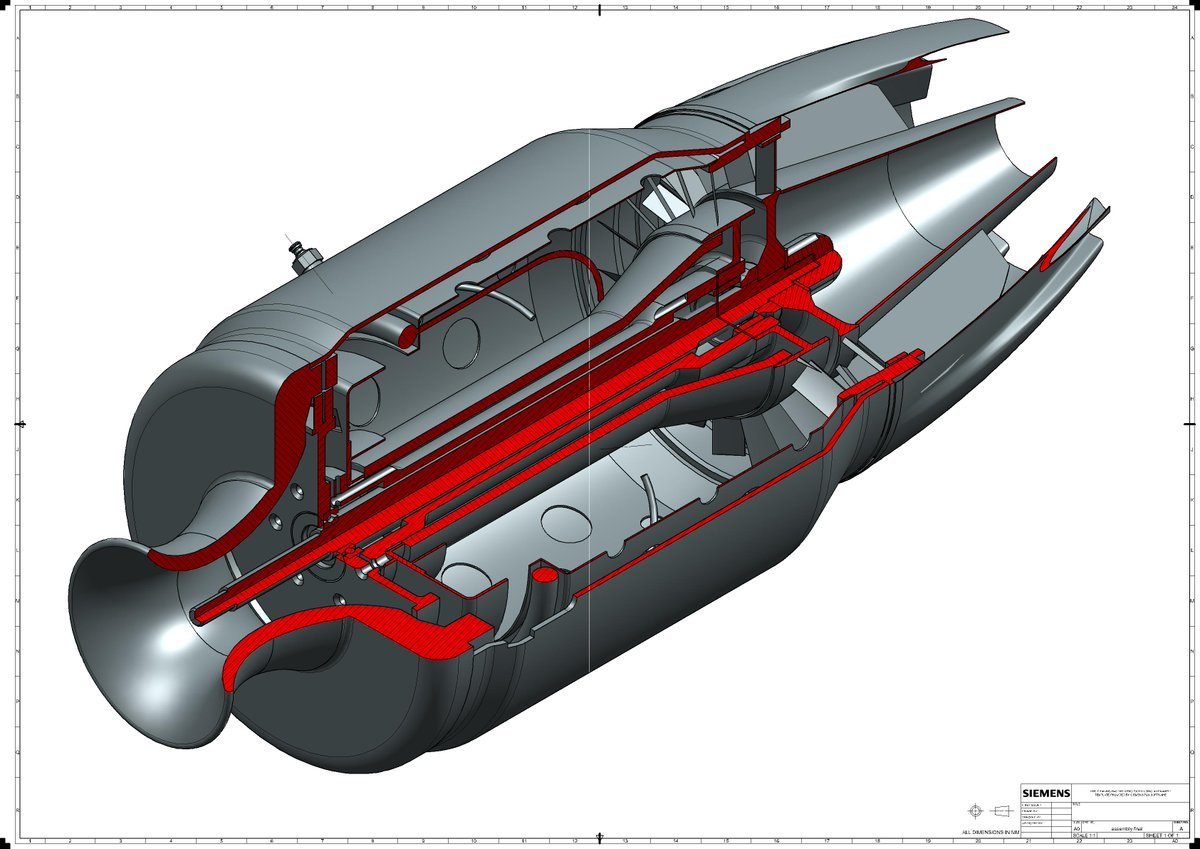
There are three main types of 3D modeling used in CAD software. Later in the article, we’ll go over how these modeling types work.
Solid
Unsurprisingly, this 3D modeling technique is used to produce solid shapes. It aims to ensure that the 3D models are geometrically correct. Compared to the other two types, solid modeling is more complex, as it requires simulating the exterior and interior of the model.
Solid modeling is helpful for creating, animating, designing, and visualizing functional models. The designer is able to see how the design looks and works from the very beginning.
Surface
Surface modeling is a mathematical method for displaying or presenting solid 3D objects. It focuses on the external aspect of a 3D model, allowing you to view the 3D model from different angles.
Surface modeling is easier to work with than solid modeling, though it’s more complex than wireframe. It’s mostly used in architectural illustrations and animations in video games.
Wireframe
Wireframe modeling is based on generating a 3D model by “bending a wire” and following the edges of an object. These 3D models consist entirely of points, arcs, circles, curves, and lines.
A wireframe object is not recognized as solid. Instead, the boundary of the object is recorded as points and their connections.
When compared to surface and solid modeling, wireframe is the least complex method of representing 3D objects. Typically, triangles are the basic elements in wireframe modeling. The more triangles, the higher the realism.
Other Options
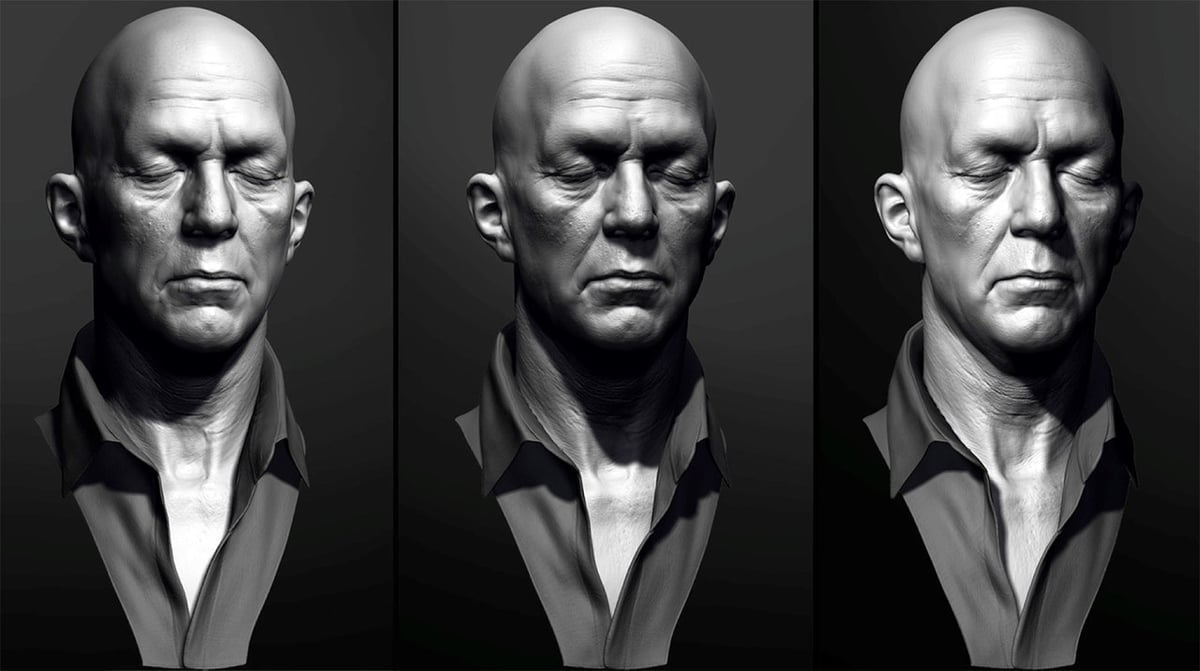
In addition to the main three, there are some other methods of 3D modeling, which we’ll briefly mention here:
- Sculpting uses brushes and other tools to smooth, grab, push, and manipulate surfaces into more organic models.
- Box modeling starts with a primitive object like a cube or shape. This object is then transformed into a model. A large portion of an object or whole object is manipulated at a time. Box modeling works best with hard surface modeling.
- NURBS stands for non-uniform rational basis spline, a 3D modeling technique used to generate surfaces and curves. Its flexibility and precision make it easier to generate shapes.
- NURMS stands for non-uniform rational mesh smooth, a 3D modeling technique used to smoothen meshes.
- Polygon modeling makes use of faces, edges, and vertices to edit parts of a 3D model. The shape of an object is altered by changing the coordinates of one or more vertices.
How Different Modeling Types Work
How 3D modeling works differs from the type being used. Let’s learn more!
Solid Modeling
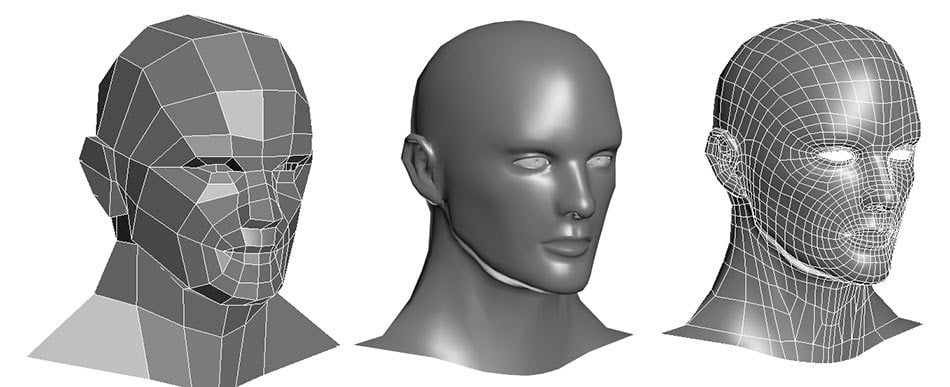
A 3D designer begins by preparing the wireframe model of the solid object to be created. The wireframe model is then converted into a 3D view and surfaces are added in to create a 3D model. Techniques used include Boolean operations, pick and place, and parametric modeling.
- Boolean operations include union, difference, and intersection, which are used to create complex designs when combined with the basic shapes. Surface operations form an airtight cavity through trimming and knitting that resembles a solid object.
- Pick and place creates the desired modification by working directly on the edges, vertices, and surfaces. A good example of this is chamfering, shelling, and drafting.
- Parametric modeling controls the geometric shape of a model by manipulating the parameters. If everything is defined properly, major changes can be made according to minor aspects.
Note that not all solid modeling programs can achieve the above.
Surface Modeling & Sculpting
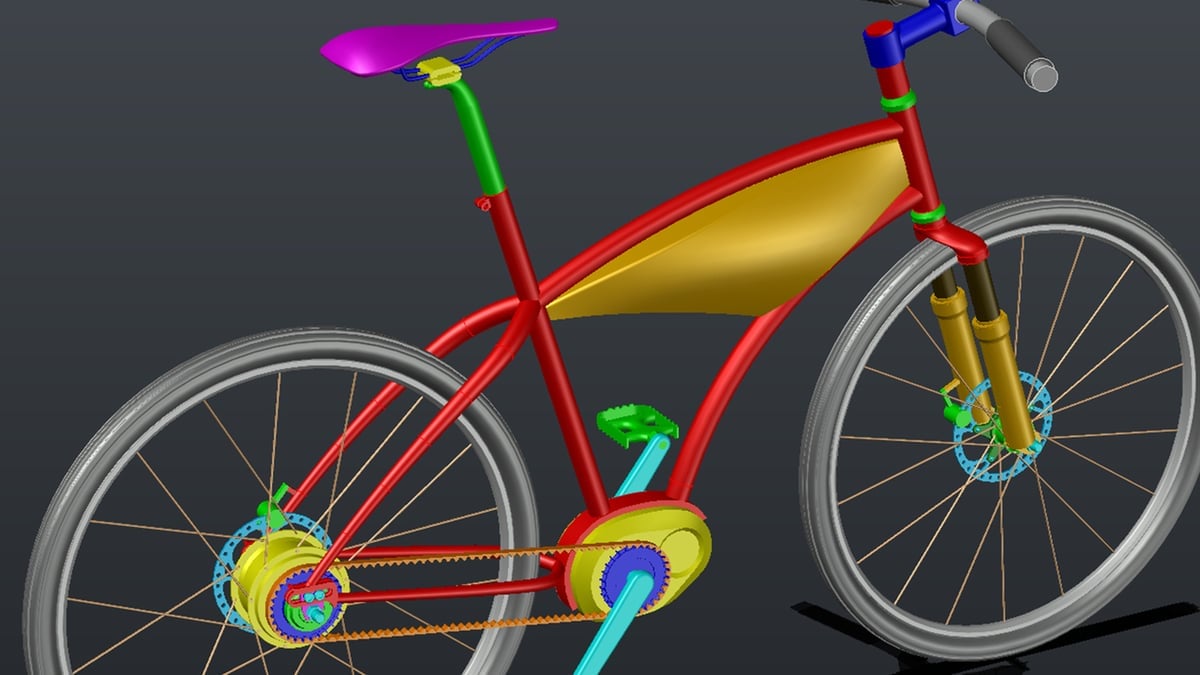
In surface modeling, one begins by defining the shapes and exterior curves of a model. Unlike in solid modeling, the objects can be physically and geometrically incorrect (with no thickness or properties of mass defined). This is helpful, as the designer will be able to manipulate the object easily with fewer restrictions.
Because of its flexibility, it’s relatively easy to work on imported objects. Deleting and replacing the faces of an imported object, for example, is straightforward.
Sculpting
3D modeling software with brushes is often called sculpting. Creating a model with sculpting tools involves pulling, pushing, smoothing, and pinching surfaces of a solid object. Complicated calculations are used to create detailed meshes that look more like real-life models.
This process often begins with a basic model or shape. Sculpting tools are then used to manipulate the surfaces. The first layer formed during sculpting defines the basic features of the model, like the nose. Once the basic shape is created, you can then subdivide the geometry to add finer details. Minor textures are added to layers with many details with further subdivisions.
Texturing and painting can also be used to make the model look more realistic. The artist can even make the model appear more complicated than it is. There are many built-in textures within 3D modeling software, and some programs even allow you to import your own.
Key Principles
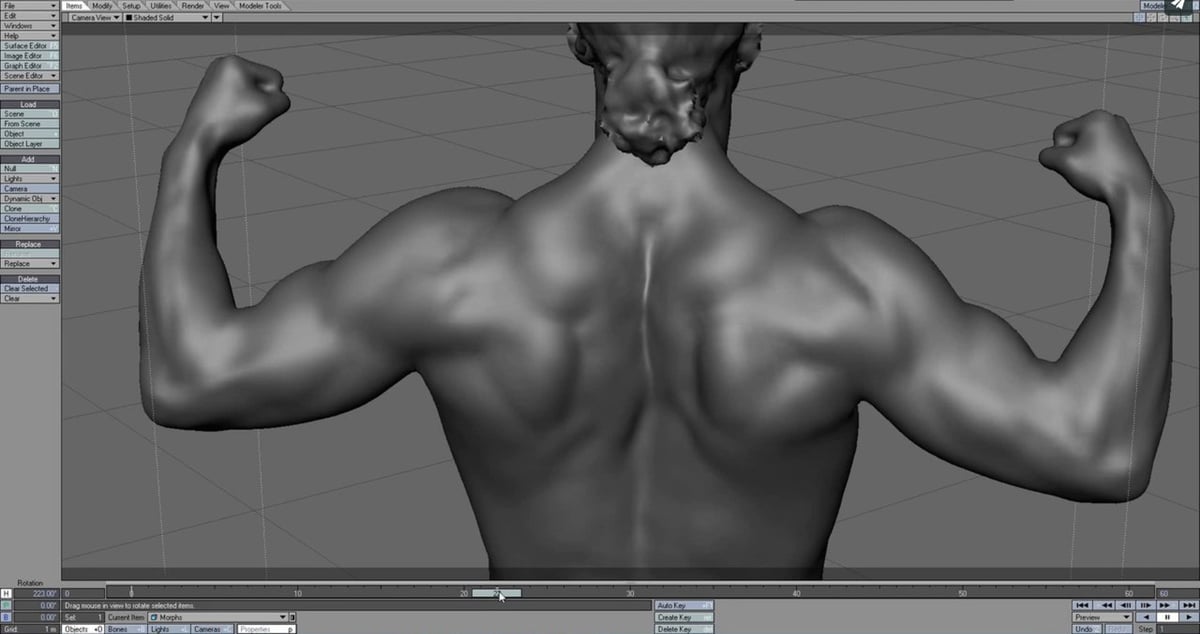
As a beginner in 3D modeling, there are some things that you’re guaranteed to stumble upon on your journey:
- Deformations in CAD programs allow a 3D designer to modify the surface of the model. For example, when designing complex models that will require one to do some experiments before getting the right design, deformation tools can be used to create a high polygon count. In this process, the designer can work in a way that preserves the original model. In deformations, the topology of the model isn’t changed.
- Manipulation is transforming an already-designed model to suit your needs. Transformation tools in CAD programs are the most widely-used tools for manipulation.
- Binary operations: A polygonal modeling operation performed to create a new mesh from two other meshes. Two or more meshes can be joined together or intersected.
- Measurements: This is the computation of the values of the mesh. You can measure the following: volume, surface area, cross-section, and also fitting.
Real World Applications
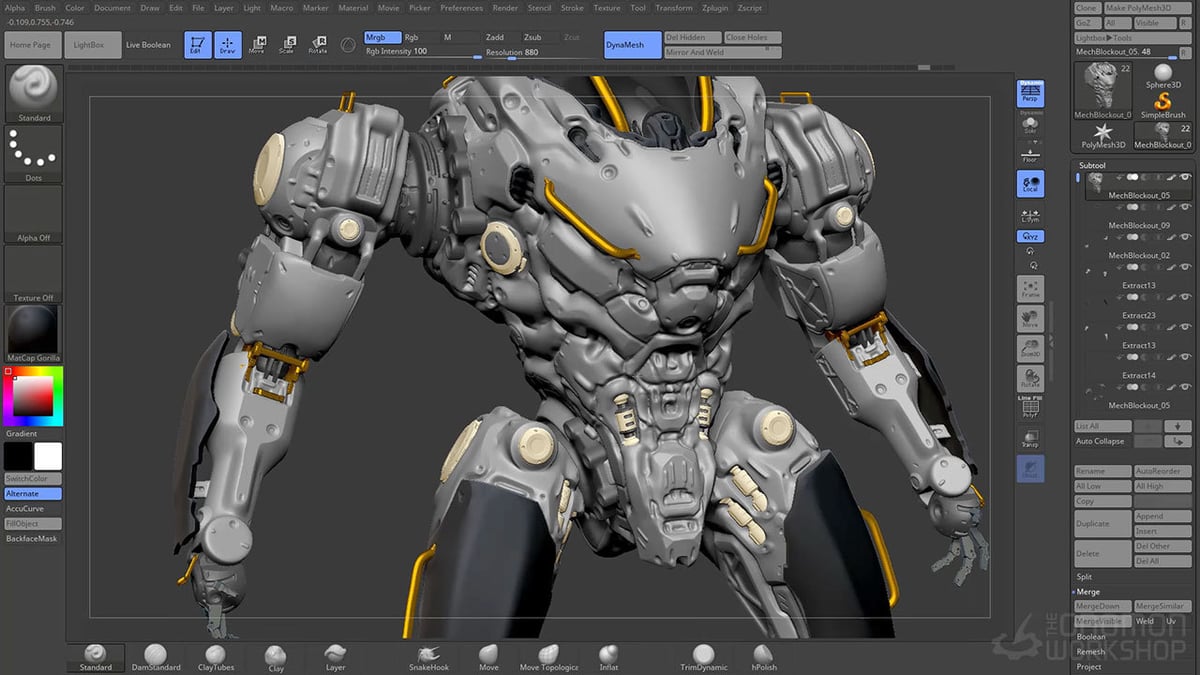
3D modeling has made it into many fields, including ones you expect and some not so obvious.
- Entertainment: 3D sculpting is used for creating characters that are used in films and TV programs. Digital sculpting software such as ZBrush, Sculptris, and SelfCAD are popular options.
- Fashion: Designers use 3D modeling to see the complications in clothes before they are physically created. It’s also used to design dynamic clothes for virtual catalogs. There is 3D modeling software for fashion design including Fusion 360, Clo, and Romans CAD, that use a combination of techniques like sculpting, box modeling, and surface modeling.
- Architecture: 3D modeling is used to visualize buildings that are yet to be constructed, often using surface modeling. AutoCAD, SketchUp, and ArchiCAD are some popular programs.
- Publishing: The possibilities for book covers and images designed with 3D modeling are endless.
- Gaming industry: 3D modeling is used to create game characters and scenes. A combination of 3D modeling and animation makes games more realistic. Sculpting and surface modeling techniques are the ones that are mostly used in this industry.
- Manufacturing: 3D modeling is used to (re)fabricate parts and improve designs, both in engineering and conceptualization.
- Medicine: 3D modeling is used to design prosthetics, parts to repair damaged organs, even dentists use 3D modeling. The 3D sculpting technique is the most useful here.
File Types
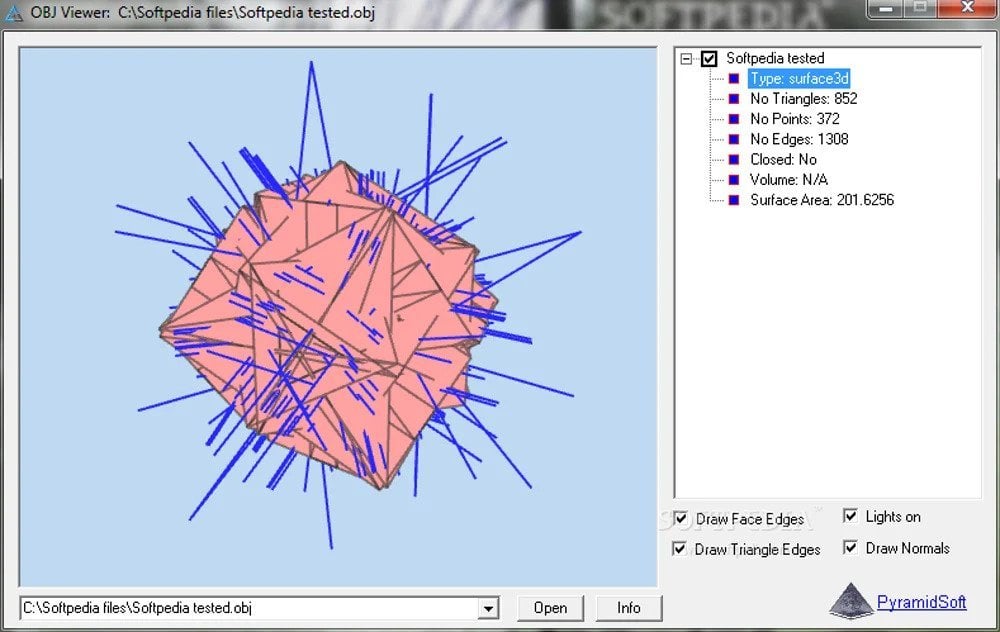
Certain file formats store various kinds of information about 3D models. The most common file types supported by CAD programs include:
- STL: A popular 3D file format, widely used in 3D printing, rapid prototyping, and computer-aided manufacturing (CAM). The STL file format was developed to make it easier to transfer files from 3D modeling software to 3D printers.
- FBX: A proprietary file format that can store information on a model’s geometry, texture, color, and other appearance-related properties. It’s mostly used when working with film and video games. It was developed by Autodesk as an interchange format for its CAD programs.
- 3DS: Another proprietary Autodesk file format that stores geometry, animation, and basic information on the appearance of the model. The 3DS format is mostly used in academic, engineering, architecture, and production domains.
- OBJ: This 3D file format is mainly found in 3D printing. It stores 3D objects that contain polygonal faces, texture maps, 3D coordinates, and other object information.
- STEP: Perhaps somewhat surprisingly, STEP stands for “Standard for the Exchange of Product Data”. It was built mainly to create a mechanism for describing product data without relying on other systems.
Common Mistakes & Solutions
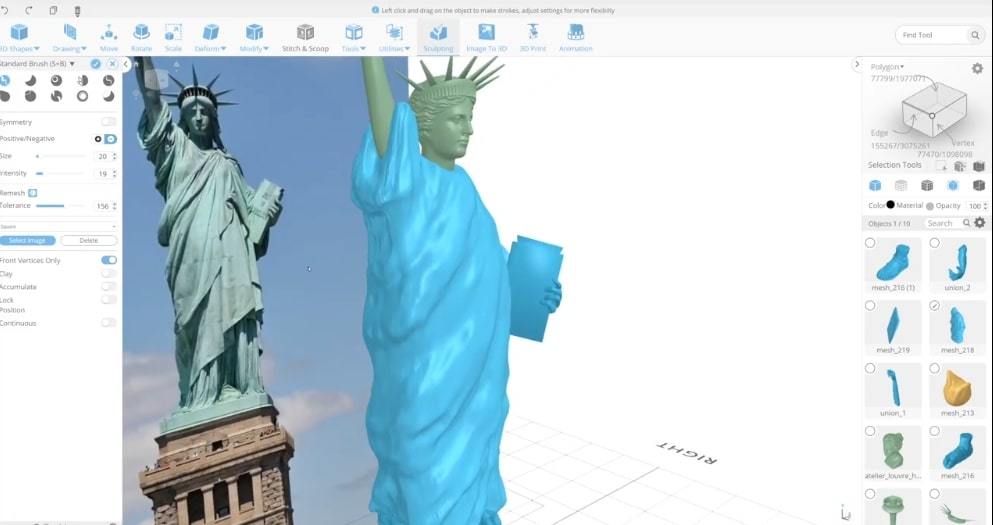
3D modeling can be a confusing experience for beginners as there’s so much to process. There are some common mistakes most newbies make when learning 3D modeling that can lead to more challenges later on. After learning them, you’ll know how to avoid them!
- Wanting too much, too soon: Once beginners have a project in mind, they want to work on it and finish it, now. We’ve all been there. But if you expect to see results immediately when you’re just beginning, you can easily get stuck. To avoid this, begin by planning and knowing the requirements of your design and selecting the appropriate approach to design the model. You can always ask for help!
- Starting a project with no references: 3D modeling can sound simple in theory but in practice, it can be tough, more so if one begins modeling without using any reference. As beginners, having a reference image can be a big help in the design process.
- Starting with complex projects too early: When modeling, most beginners end up with a problematic mesh because they aren’t experienced enough to handle complex topologies and meshes. It’s recommended to begin with simple designs that are easier to create meshes for. Of course, once you feel comfortable, start tackling more complex models. This is important to avoid frustrations ahead.
- Creating the entire model as a whole: If you start working on a project without breaking it down into manageable chunks, it can easily get overwhelming. Both beginners and experienced designers would be helped by a plan to break down the project into smaller pieces. This makes work simpler and it can save you time.
- Creating excess subdivisions too early: If you do this, the design can lose quality by distorting the shape. To avoid any issues, make sure you use the resolution tool in your CAD program once you’re sure you’ve aced the shapes you already have.
- Overlooking topology and rough surfaces: Most beginners usually don’t put much emphasis on topology and rough surfaces and they end up modeling bumpy surfaces. Checking that no stray vertices are interrupting the edge loops can help.
- Lack of practice and patience: Just like any other skill, practice is very important. Without practice, it’s hard to advance your modeling skills. As a beginner, invest in practice even as you follow tutorials. The experience you gain on your own is critical.
Tips
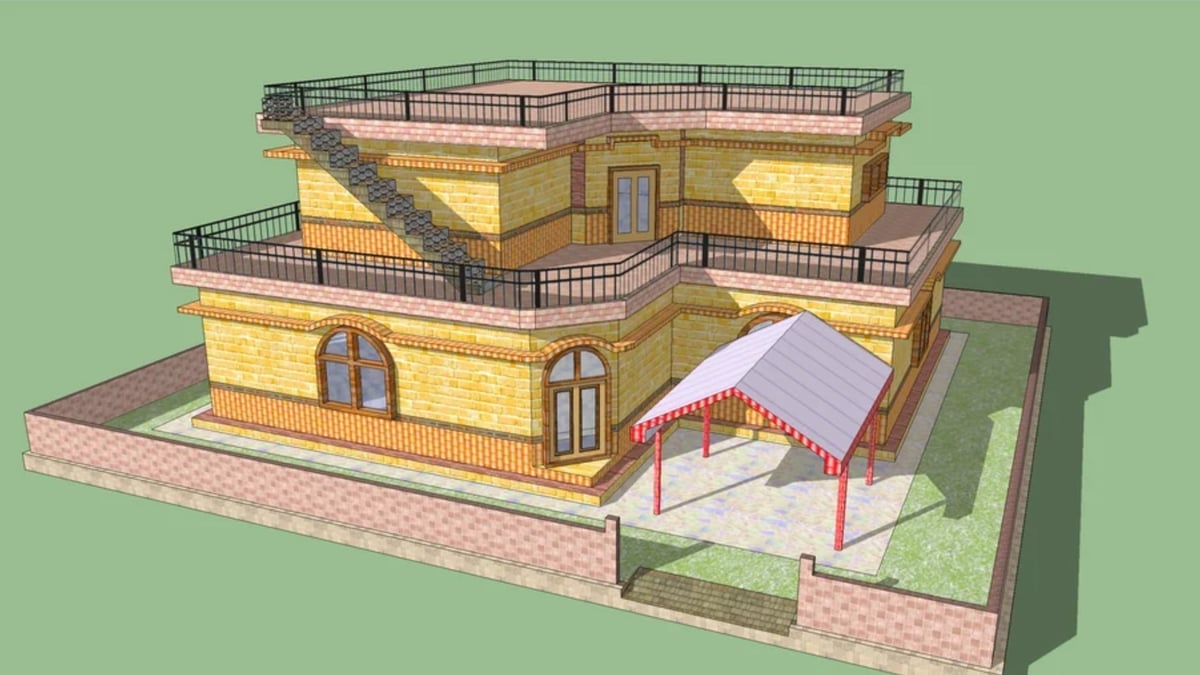
Now that we know some of the pitfalls and solutions that can befall modeling newbies, let’s go over some more tricks!
- Choose the right 3D modeling program: Begin with 3D modeling software meant for beginners.
- Learn the basics first: Start by modifying basic shapes like cubes or triangles. Master the different elements and techniques to bring your ideas to life.
- Pay attention to the setting: Ensure the background is fitting for your project. This will make it seem more realistic.
- Take notes: Define and visualize how the model will look, how you’ll start modeling, and how the final model should appear.
- You can always reuse: Reuse meshes to save time.
Glossary
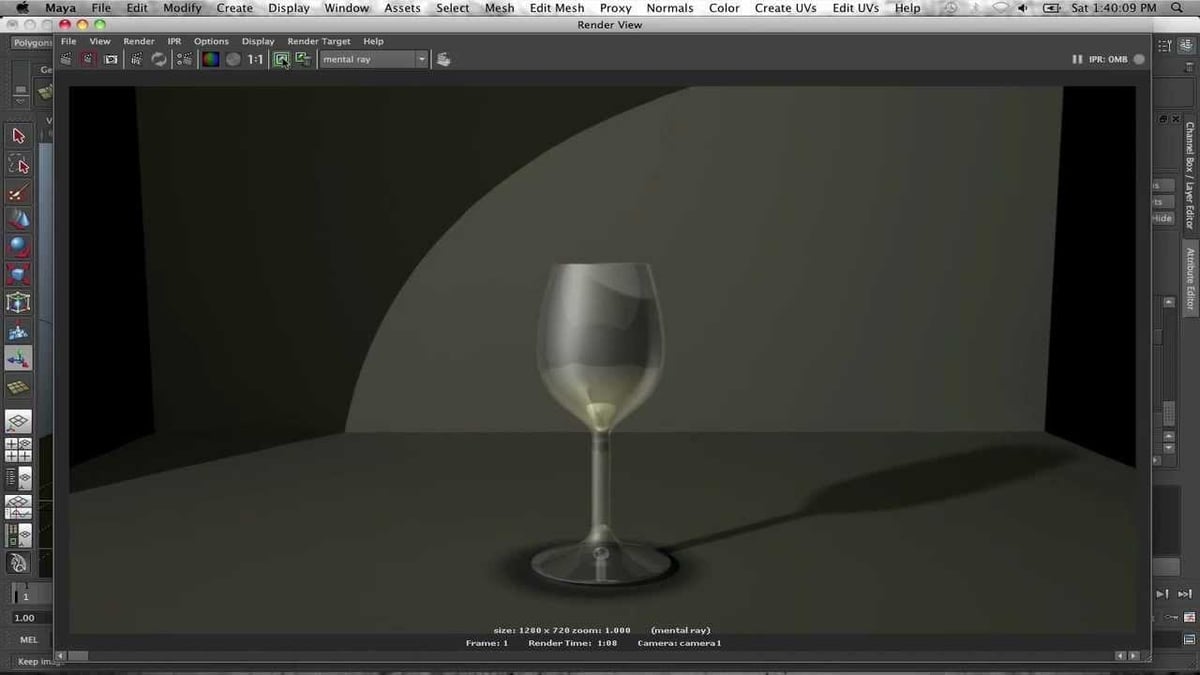
- 3D: Three-dimensional. Can be a display, performance, or medium in three dimensions (X-, Y-, and Z-axes).
- 3D object: Anything that can be represented in 3D space. Geometric objects are good examples of 3D objects, whether they are surfaces, curves, nulls, or polygon meshes.
- 3D rendering: A final stage in 3D modeling that involves the finalizing of a model. It involves special effects, modifying colors, adding textures, and lighting.
- 3D sculpting: The process of creating a 3D model through shaping and molding blocks using brushes and other sculpting tools. The process includes pushing, pulling, inching, and pinching.
- Axis of motion: A line that an object follows when it’s moving in the scene.
- Axis of rotation: A line that a 3D object in the scene rotates around.
- Backface of culling: A technique that checks the orientation of a triangle and removes those facing away from the camera.
- Beveling: The process of removing sharp edges in a model to give it a realistic look and enhance its appearance.
- Boolean: A mathematical system used to express the connection between things. It’s used in 3D modeling to add, subtract, and do other operations.
- Boolean operations: A technique that uses two objects to create another object. The objects must be overlapping.
- CAD: An acronym for computer-aided design. It’s a system that allows designers to use computing to design models.
- CAM: Computer-aided manufacturing is the creation of physical products from computer-designed objects.
- Edges: Formed by two vertices joined together, edges are used to transform 3D models.
- Extrude: Adding a third dimension to a two-dimensional shape to create a 3D object.
- Faces: It’s formed through a connection of three or more edges.
- Geometry: This vertex data results in the actual 3D model.
- Lighting: Multi-directional and uniform light that illuminates a 3D model makes rendering scenes much easier. V-Ray and Corona are a couple of the programs used for lighting.
- Materials: Includes colors and textures assigned to 3D models to make them more real-looking. It has different kinds of properties depending on the rendering mode being used.
- Mesh: A 3D model that’s made of triangular polygons. Polygons consist of edges, faces, and vertices that determine how the shape of an object looks.
- Node: A container found inside a scene. It contains properties such as angle and position.
- NURMS modeling: A technique that uses low-polygon mesh to transform the shape of a smooth surface. It’s usually used to smooth meshes in programs such as AutoCAD and 3ds Max.
- Polygonal modeling: 3D modeling objects by using polygons to make rough estimates of surfaces. In polygon modeling, vertices, edges, and faces are all worked on.
- Rapid prototyping: The entire process of creating a 3D model using 3D modeling techniques and printing it using a 3D printer.
- Render: Creation of an image through the data stored on a computer.
- Rig: The process of making animation easier by adding control points to the model.
- Scene: Primary elements used to contain objects in 3D modeling programs. It includes environmental settings and object graphs.
- Texture: The image applied to a 3D object as a part of a material.
- Topology: This is how polygons are organized and connected.
- Vertices: A point in a 3D space. When several vertices are combined with edges, it forms a polygon.
- WebGL: A JavaScript code used to render 3D objects in a browser.
License: The text of "How to 3D Model: The Basics of 3D Modeling" by All3DP is licensed under a Creative Commons Attribution 4.0 International License.


